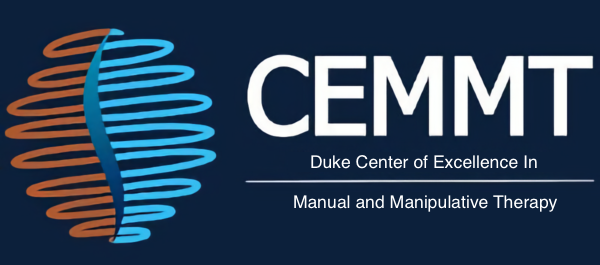Early use of thrust manipulation versus non-thrust manipulation: a randomized clinical trial.
Study Design: Randomized Controlled Trial
Abstract: The purpose of this study was to investigate the comparative effectiveness of early use of thrust (TM) and non-thrust manipulation (NTM) in sample of patients with mechanical low back pain (LBP). The randomized controlled trial included patients with mechanically reproducible LBP, ≥ age 18-years who were randomized into two treatment groups. The main outcome measures were the Oswestry Disability Index (ODI) and a Numeric Pain Rating Scale (NPRS), with secondary measures of Rate of Recovery, total visits and days in care, and the work subscale of the Fears Avoidance Beliefs Questionnaire work subscale (FABQ-w). A two-way mixed model MANCOVA was used to compare ODI and pain, at baseline, after visit 2, and at discharge and total visits, days in care, and rate of recovery (while controlling for patient expectations and clinical equipoise). 149 subjects completed the trial and received care over an average of 35 days. There were no significant differences between TM and NTM at the second visit follow-up or at discharge with any of the outcomes categories. Personal equipoise was significantly associated with ODI and pain. The findings suggest that there is no difference between early use of TM or NTM, and secondarily, that personal equipoise affects study outcome. Within-groups changes were significant for both groups.
NIH Risk of Bias Score: 8/14 (Moderate to High Risk of Bias
Key Findings of the Study:
- There were no differences between groups for those who received thrust manipulation and non-thrust manipulation
- Therapist expectations of a benefit of one technique over another did influence overall patient outcomes
- Outcomes were to discharge only (on average about 35 days
Reviewer Summary: The study found no between groups differences in thrust versus non-thrust manipulation but there were several methodological concerns associated with the study that could influence findings. Firstly, the treatment selection of thrust or non-thrust was only controlled for the first two visits. Secondly, the authors only looked at outcomes to discharge, which was about 45 days on average. The most interesting aspect of the study was that therapist expectations (clinical equipoise) did influence outcomes in the patients that received care. This suggests that a clinician’s preference of treatment in a randomized trial could influence overall outcomes and should be measured at baseline. Although an interesting study, further works should fairly compare thrust and non-thrust manipulation.
